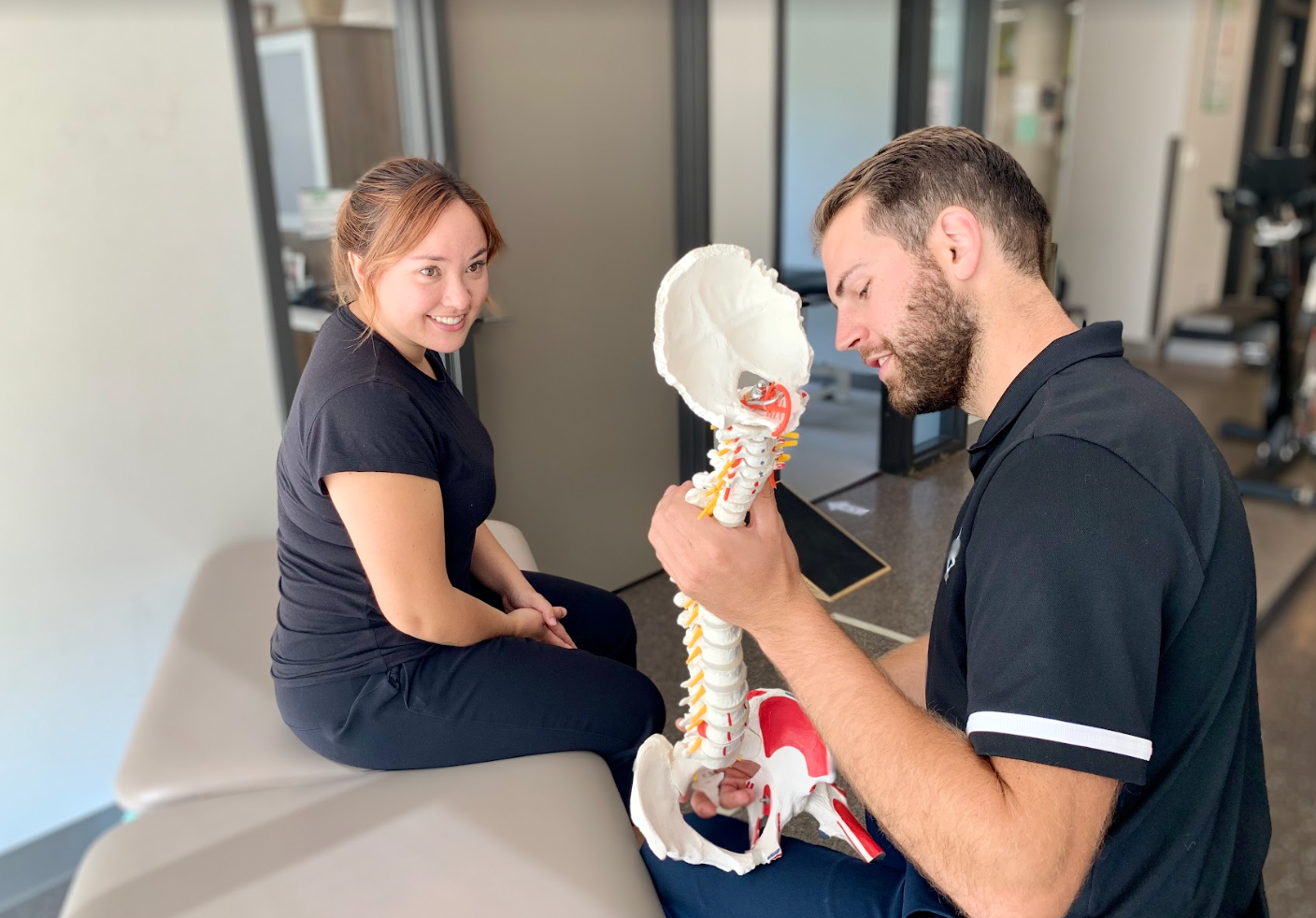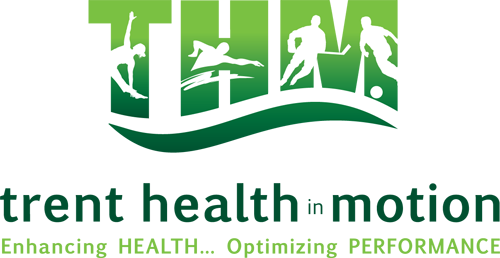Address
Get in touch
Call: 705-741-4758
Email : info@trenthealthinmotion.ca
Follow us
Business Hours
- Mon - Thu
- -
- Friday
- -
- Sat - Sun
- Closed
Trent Health in Motion – Trent Athletics Centre, 1600 West Bank Drive, Peterborough
Call Us: (705) 741-4758 or Book Online
Spinal Stenosis Treatment Program
Spinal stenosis can cause people to experience pain, tingling, numbness, muscle weakness, and other symptoms.
The most common form of spinal stenosis is lumbar spinal stenosis (LSS), which occurs in your lower back. Along with the lower back, the neck is also a common area. However, spinal stenosis can happen anywhere along the spinal column.
What Is Spinal Stenosis?
What is spinal stenosis? It is a narrowing of the spaces in your spine, called the spinal canal. This narrowing reduces the amount of space available for your spinal cord and puts pressure on the nerves that travel through your spine. That can cause numbness, pain, or other issues.

Osteoarthritis, the gradual wear and tear that happens over time, is one of the most common causes of spinal stenosis. As you age, the protective cartilage that cushions the ends of your bones can wear down. That can cause your bones to rub together, and the resulting inflammation and formation of abnormal bone growth can contribute to the narrowing, leading to spinal stenosis.
Other potential causes include degenerative disc disease, injury to the spine, a herniated or bulging disk, rheumatoid arthritis, certain inherited conditions, and other issues.
What Are the Symptoms of Spinal Stenosis?
Spinal stenosis develops gradually over time. While some people may have no symptoms, others may feel a variety of different ones. These usually vary depending on the location of the stenosis because different nerves may be affected depending on the site.
Symptoms of spinal stenosis include:
- Numbness or tingling in your arms, legs, hands, or feet
- Weakness in feet, legs, arms, or hands
- Pain or cramping
- Issues with walking or balance
- Loss of sensation in your arms, hands, legs, or feet
- Reduced strength or coordination
- Severe compression can sometimes result in bowel or bladder dysfunction
Symptoms may come and go, and it’s possible to experience tingling or numbness without pain. Some people do not experience any pain along with their symptoms. Different people experience different issues depending on many factors, so talking to a professional is important.
What Does the Spinal Stenosis Treatment Program Involve and What Outcomes Can I Expect?
If you want to know how to treat spinal stenosis, you’ll first need to be diagnosed with spinal stenosis. This process usually starts with a physical exam. That can involve feeling your spine, pressing on certain areas to see if there is any pain, asking you to move into different positions to see if doing so causes or alleviates pain, checking your arm and leg strength, and more.
In some cases, x-rays, MRIs, or a computed tomography scan may be ordered to learn more about the problem and its exact location.
Spinal stenosis treatment depends on your symptoms and their location. Every situation is different and requires a treatment plan.
Treatment strategies include self-management options, manual therapy, instruction on body repositioning, physical therapy, and much more. Proper stretching and massage can help alleviate symptoms and improve your condition.
Unfortunately, many people who have spinal stenosis may become less active, especially if it causes pain or discomfort to move. That can lead to muscle weakness which can lead to more pain. Exercise therapy can help you build up strength and endurance, improve the flexibility and stability of your spine, improve your balance, and much more.
Contact Us Today!
The
treatment team at Trent Health in Motion can help you achieve this goal, improve your quality of life, reduce pain and discomfort, improve your standing and walking ability, and much more. Call us at
705-741-4758 or
contact us online to book a consultation today!
Have a question for one of our health professionals?

A Centre for Health Excellence, Trent Health in Motion is a private multidisciplinary clinic that is unique to the Peterborough area in terms of the wide range of health services available as well as the state of the art facility. We offer physiotherapy, pelvic health physiotherapy, chiropractic, massage therapy, athletic therapy, pool/hydrotherapy, kinesiology, dietitian, sports medicine, and on-site sports event coverage.
705-748-2139
Clinic Services
Clinic Hours
Monday 8:00 AM — 7:00 PM
Tuesday 8:00 AM — 7:00 PM
Wednesday 8:00 AM — 7:00 PM
Thursday 8:00 AM — 7:00 PM
Friday 8:00 AM — 5:00 PM
Saturday Closed
Sunday Closed
© 2023 — Trent Health In Motion, Peterborough, ON | Privacy Policy
